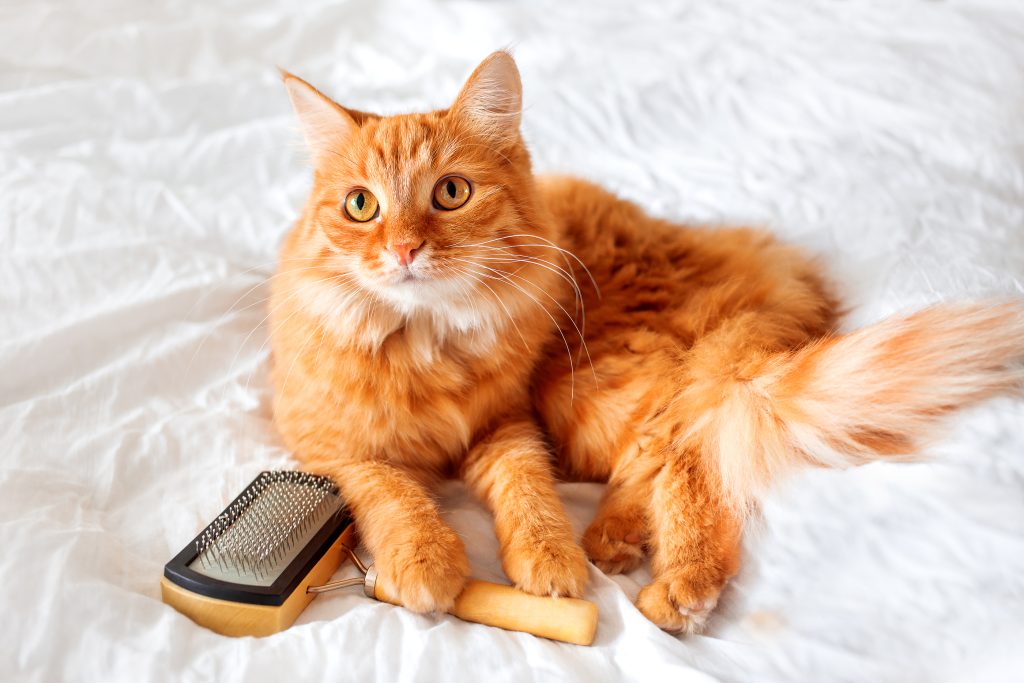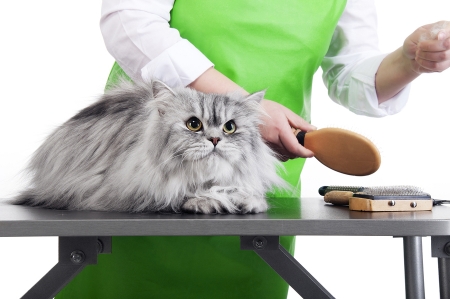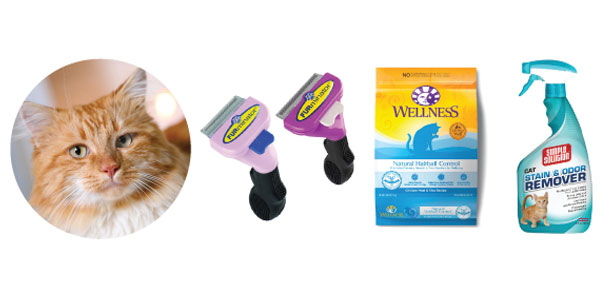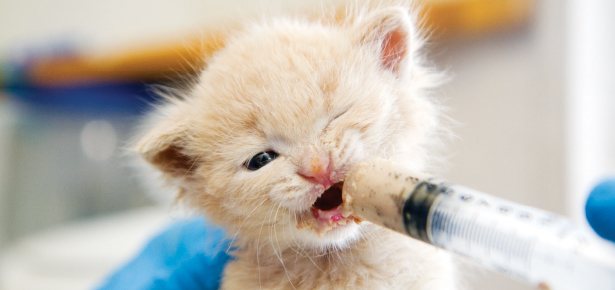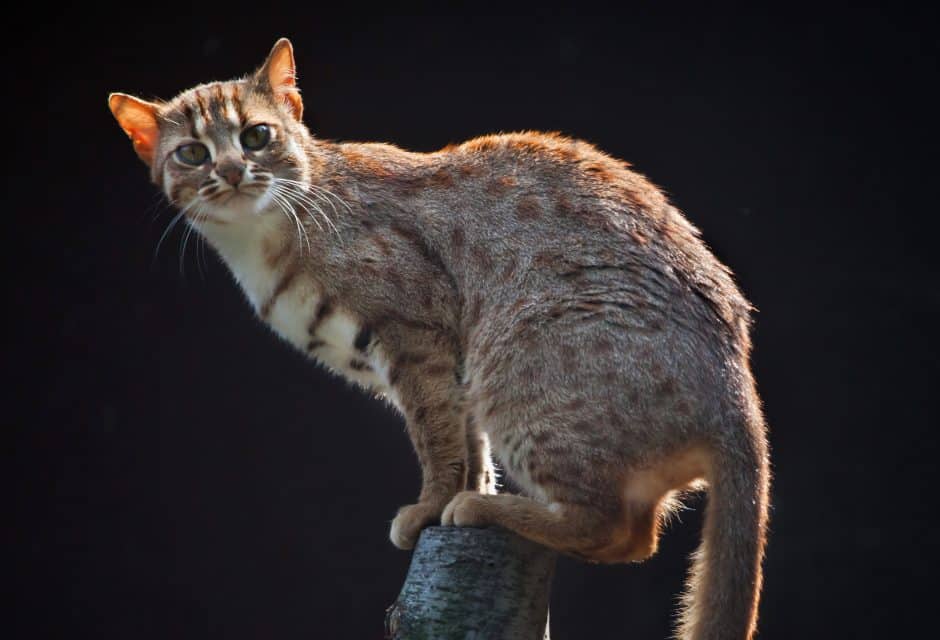
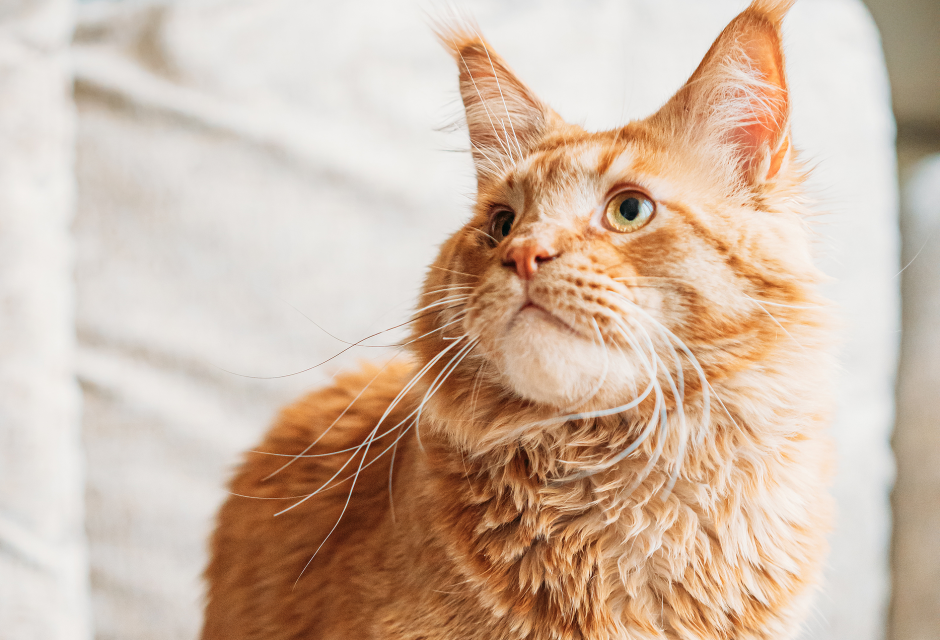
How to Groom Fluffy Cats
Wondering how to best groom fluffy-coated cat breeds? These experts tips will keep your long-haired cat looking their best!
Who doesn’t love a fluffy cat?! If you’d love to have a fluffy cat but are worried about the amount of work required to look after all that hair, furr-not! We have expert tips from Nancy Kerr, a cat expert with The Cat Fanciers’ Association and writer for The Cat Fanciers’ Association’s magazine, Cat Talk. Read on to help your fluffy cat have a good fur day, every day!
Any CFA cat show exhibitor will tell you is that maintenance is the key to a good coat. Fluffy cats especially require regular grooming to help prevent mats, tangles, and hairballs, which can be uncomfortable and may lead to health problems.
How to Make Cat Grooming Time a Bonding Experience
Grooming can be a special bonding time between you and your cat. Some cats love to be groomed, but if your cat does not fall into this category, try giving treats during the process. This may help to enforce grooming as a positive experience. Pay attention to areas where mats can form, such as behind the ears, the armpits, the chest, and on the back legs. While grooming, periodically run a hand over your cat’s coat to make sure that you are not missing any mats.
The amount of time for a grooming session will depend on the cat and their coat. The softer and more cottony a cat’s hair, the more maintenance that is required, as these coats are more prone to getting tiny knots at end of the hair.
Cat Grooming Tools Needed for Fluffy Cat Coats
For grooming, use a good quality smooth metal comb or brush for pets. Persian and Exotic type coats will require daily grooming with a wide, metal comb, while the Maine Coon Cat type only requires brushing or combing a couple of times a week. When grooming a cat that has a dense, plush coat like the British Shorthair, you should brush your cat once or twice a week with a metal-tooth comb or rubber brush.
Shedding; Fluffy Cats Shed Differently
Fluffy cats shed the same number of hairs as short-hair cats, however how they shed is different. When shorthair cats shed, you will notice the individual short hairs on everything in your home. When fluffy cats shed, it is in clumps that resemble furry tumbleweeds rather that individual hairs. You will notice an increased production of these tumbleweeds during the spring when cats start to lose their winter coats. Extra grooming sessions during this time will help to reduce the buildup this of dead hair which can cause mats.
Out, Out, Damn Mat! How to Get Mats Out of a Fluffy Cat’s Coat
No matter how often or well you groom your cat, mats can still happen. To remove the mats, work at them with a large toothed metal comb and gently pull them apart. If you have larger mats, gently pull them apart into smaller knots using your fingers. Then use the comb to gently work them out from outside of the mat. If you do not have any grooming powder, a bit of cornstarch or regular baby powder on the mat may help with removal. You need to make sure that you don’t pull the hair out. Doing this will cause a bald spot and in some cases if there is significant damage to the hair follicles, the hair may not grow back. It may take between three to six months for the hair to fully grow back. Do not try to cut the mat. If the mat is not coming apart, use scissors to lightly trim the end of mat furthest away from the skin. This may help to loosen the mat and make combing easier.
Bathing a Fluffy Cat
While cat show exhibitors bathe cats weekly (and more!) for competition, you probably will not need to. If you do need to bath your cat, trim all the nails before starting the bath. Ideally, bathing should take place in large sink or bathtub that has a hose. Begin with a good quality shampoo and conditioner made for cats.
Be sure to dilute the shampoo in a large cup of water so that it will disperse evenly over the body. A common ratio is a mixture of half water and half shampoo. Dilute a bit of conditioner in a large container of water, then pour that mixture over the body. When removing the products from the coat, remember to rinse until you have everything out of the coat, then rinse some more. You can never over rinse. There should be no suds and the coat should not feel slippery. Product left in the coat can lead to sticky, matted fur. Use towels to remove as much moisture as possible from the coat. Pet drying towels can be purchased from Amazon and pet stores. If you do not have a dryer specifically for pets, you can use a human one that has low heat settings.
If you have to bath a cat with a British Shorthair type of coat, blow drying is the best way to ensure that your cat’s coat dries quickly and evenly. If you must bath a cat with a long Maine Coon Cat coat type, wrap them up in thick towels to soak up the excess water, and then blow dry or let the coat air dry. If you have to bath a cat with a Persian or Exotic coat type, squeeze the excess water from the coat, pat the coat dry with a towel, dry the cat’s face with a towel, and then dry the cat with a dryer using a metal comb to separate the hair. If letting a cat air dry, keep them in a warm area until dry.
How to get Cat Poop Out of a Fluffy Cat’s Coat
If your cat has fresh poop stuck on their coat, gently remove it with toilet paper or a paper towel. Sprinkle any left-over poop with baby powder (for the smell), let dry then comb. Use your fingers to break hardened dry stool into smaller pieces before combing out of the coat. Rinse off diarrhea or large clumps of poop, while using your fingers to break down and remove as much poop as possible. Then shampoo the area as normal.
The Food Connection: How Diet Affects Your Cat’s Coat
It is important to make sure that you feed your cat a good quality food. If your diet consists of food that is not good for you, you may gain weight and have hair and/or skin issues. The same is true for your cat. A poor diet will be reflected in your cat’s coat, skin, and body condition. Read product labels and make sure that you select a good quality dry and wet cat food. Your cats’ stool should resemble a glistening tootsie roll. If the diet is not quite right, it may get stuck on the cat’s fur, which could mean additional grooming and bath time.
Anyone can groom their cat with relative ease. Regularly scheduled grooming sessions are key to keeping your fluffy cat looking and feeling good.
Nancy Kerr is a writer and copy editor for The Cat Fanciers’ Association’s magazine “Cat Talk.”
Join the newsletter and never miss out on cat content again!
"*" indicates required fields
By clicking the arrow, you agree to our web Terms of Use and Privacy & Cookie Policy. Easy unsubscribe links are provided in every email.





